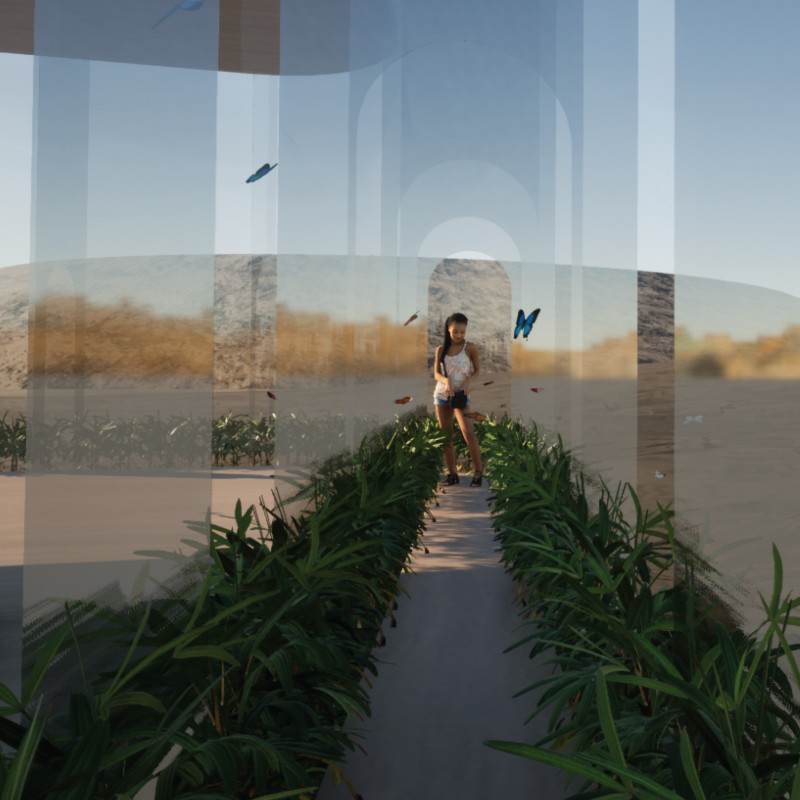5 key facts about this project
The GREENSKIN project combines greenhouse elements with a functional architectural design, located in an environment focused on sustainability and user interaction. The main feature is a double skin facade that serves a dual purpose: it offers necessary warmth for growing tropical foods indoors and allows for vast 360-degree views of the outside landscape. By merging agricultural practices with living spaces, the design reimagines how people engage with food sources while addressing energy efficiency.
Design Concept
At the heart of the design is a solution that reduces the temperature difference needed to heat a fully glazed building in colder climates. This dual facade improves thermal comfort and encourages occupants to think about the relationship between city life and farming. GREENSKIN creates a space that invites users to connect with the food they consume, providing insights into agriculture.
Functionality
The interior layout includes areas for dining and social gatherings, where people can look out onto the greenhouse. This arrangement enriches the experience, creating chances for meaningful interaction with agricultural practices. Encouraging users to take part in the growing process helps merge cooking with sustainable living.
Spatial Dynamics
The design incorporates a central interactive greenhouse, serving as a pathway that encourages movement and interaction. This approach promotes connections between inside and outside spaces. A landscape viewing platform enhances the experience further, allowing users to stay connected with both the greenhouse and the surrounding environment.
Material Implications
While the presentation does not specify materials used, the focus on thermal management hints at using effective building solutions that support the greenhouse structure. The design emphasizes energy efficiency and sustainability, reflecting a trend toward combining functional needs with environmental awareness.
Vertical planters line the walls of the greenhouse, introducing layers of greenery that not only enhance aesthetics but also support biodiversity. This design choice helps create a better microclimate, contributing positively to the overall environment while allowing the space to thrive with life.






















































